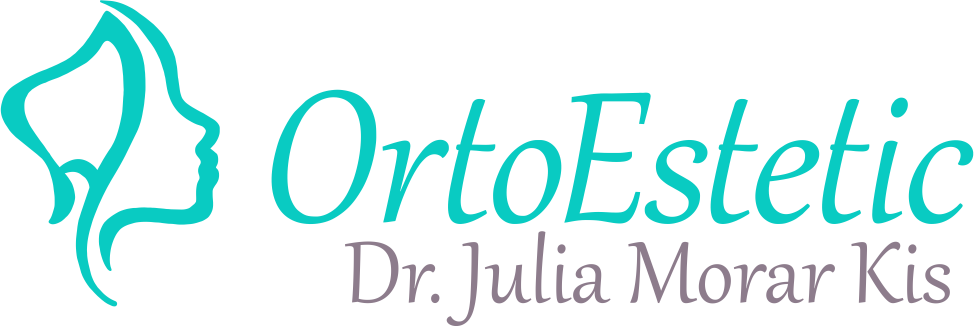frequently asked questions
Questions and answers
- When is the best time to start orthodontic treatment for my kids?
- Is it ever too late to wear orthodontic appliances / dental braces?
- What happens if we din't follow an orthodontic treatment?
- Can I straighten my teeth without having brackets glued to my teeth?
- Are there any dietary restrictions during treatment with 'invisible' aligners (Invisalign or Spark)?
- How often should aligners be worn, in the case of Invisalign or Spark aligners?
- How do Invisalign work?
- Can orthodontic treatment be painful?
- How many visits to the orthodontist does an orthodontic treatment involve?
- Is it possible to extract permanent teeth to align the teeth and correct the bite?
- What payment methods are available at OrtoEstetic?
- What is mini-orthodontic implant?
The American Orthodontic Association recommends that every child be orthodontically evaluated before the age of 7. Our recommendation, however, is that the first evaluation be done at age 3. Early intervention can prevent serious and irreversible problems and may even eliminate the need for dental appliances.
No! 'It's never too late.' Wearing braces doesn't matter how old you are! Indeed, orthodontic treatment in childhood guarantees results in a shorter period of time. Age, however, is not a factor that excludes orthodontic treatment with dental appliances, as the benefits are very solid for both children and adults.
In general, uncorrected orthodontic problems can lead to the following:
- Tooth cavities, when teeth are too crowded
- Loss of dental tissue due to improper biting (pathological abrasions, cracks, dental fractures, etc.)
- Occurrence / worsening of periodontal problems
- Teeth remained blocked in the bone (impacted), due to insufficient space for their eruption (we frequently find the upper canine in this situation)
- Temporomandibular joint problems, craniocervical muscle tension, headaches
- Inefficient and uncomfortable chewing
- Unattractive dental and / or facial appearance with negative social impact
- Speech problems
- General health problems (digestive problems, breathing problems, etc.).
Yes! Aligners (Invisalign or Spark) are an 'invisible' and totally non-invasive alternative to conventional orthodontic appliances. This will align your teeth and correct your bite using a series of clear, removable, almost invisible aligners. These transparent elements (the clear aligners) are designed specifically for your case and work by applying controlled and constant forces.
No. Unlike traditional orthodontic appliances, Invisalign and Spark invisible aligners give you the option of removing them at mealtime. So you can eat whatever you want during treatment. So there's no need to restrict your favourite foods during treatment with invisible appliances.
The aligners should be worn at all times during treatment, except when eating, brushing or flossing.
Invisalign aligners move teeth into the desired position with the help of aligners / plastic trays (transparent elements that are applied to the teeth). Invisalign aligners apply controlled forces to the teeth. The aligners are changed at an interval set by your orthodontist (the interval can be 7, 10 or 14 days). Unlike traditional orthodontic appliances, Invisalign controls not only the degree of movement of each individual tooth, but also the timing of the movement. The result is an efficient force application system that moves teeth into the desired prescribed position.
In the vast majority of cases, orthodontic treatments are painless. Discomfort generally occurs in the first few days after the orthodontic appliances are installed. The discomfort consists of sensitivity in the teeth and irritation / small lesions in the oral mucosa. In just 3-4 days, maximum one week, these sensations will subside and disappear completely.
Orthodontic check-ups / activations are carried out at intervals of approximately 4-12 weeks, but this interval differs from case to case and also differs depending on the type of the orthodontic appliances used in treatment. So your orthodontist will decide, depending on the specifics of your case, how often you need to come in for your activation check-up.
Our first option is always to avoid dental extractions by using a nonextraction treatment plan whenever this scenario is possible. We only resort to extractions in situations where they are the only option for further treatment. Dental extractions may be necessary to create space to resolve severe dental crowding, and/or bite correction.
Orthodontic treatments can be paid both in cash and with any bank card; both cards issued in Romania and international cards. Certain procedures, which involve high costs, can be paid in several instalments.
The mini-orthodontic implant is a titanium screw, similar to a dental implant but smaller in size. Mini-implants are used for orthodontic purposes to help move teeth in directions where conventional braces are ineffective. Depending on the direction in which the orthodontist wants the tooth to move, the orthodontic mini-implant acts as an anchorage system to make this movement possible.
Mini-implants can be associated with all types of orthodontic appliance systems. Compared to the dental implant used to replace missing teeth, the orthodontic mini-implant has fewer anatomical limitations and the insertion and removal procedure is much simpler. The classic dental implant, used for prosthetic purposes, requires a longer period of osseointegration. The orthodontic mini-implant is used as a temporary means of anchorage and does not require a long period of stabilisation in the bone.
The procedure for inserting the mini-orthodontic implant is very simple and painless. Mini-implants are inserted with minimal local anaesthesia applied beforehand, local disinfection and the insertion procedure. The whole procedure takes about 10 minutes. Mini-implants are most commonly placed between the dental roots, but can also be inserted in other areas such as the retromolar area, tuberosity or hard palate.
Your opinion matters!
You are satisfied with the OrtoEstetic experience. Do you appreciate OrtoEstetic doctors? If you would like to share with others, give them the information. Write a recommendation to help other patients.

